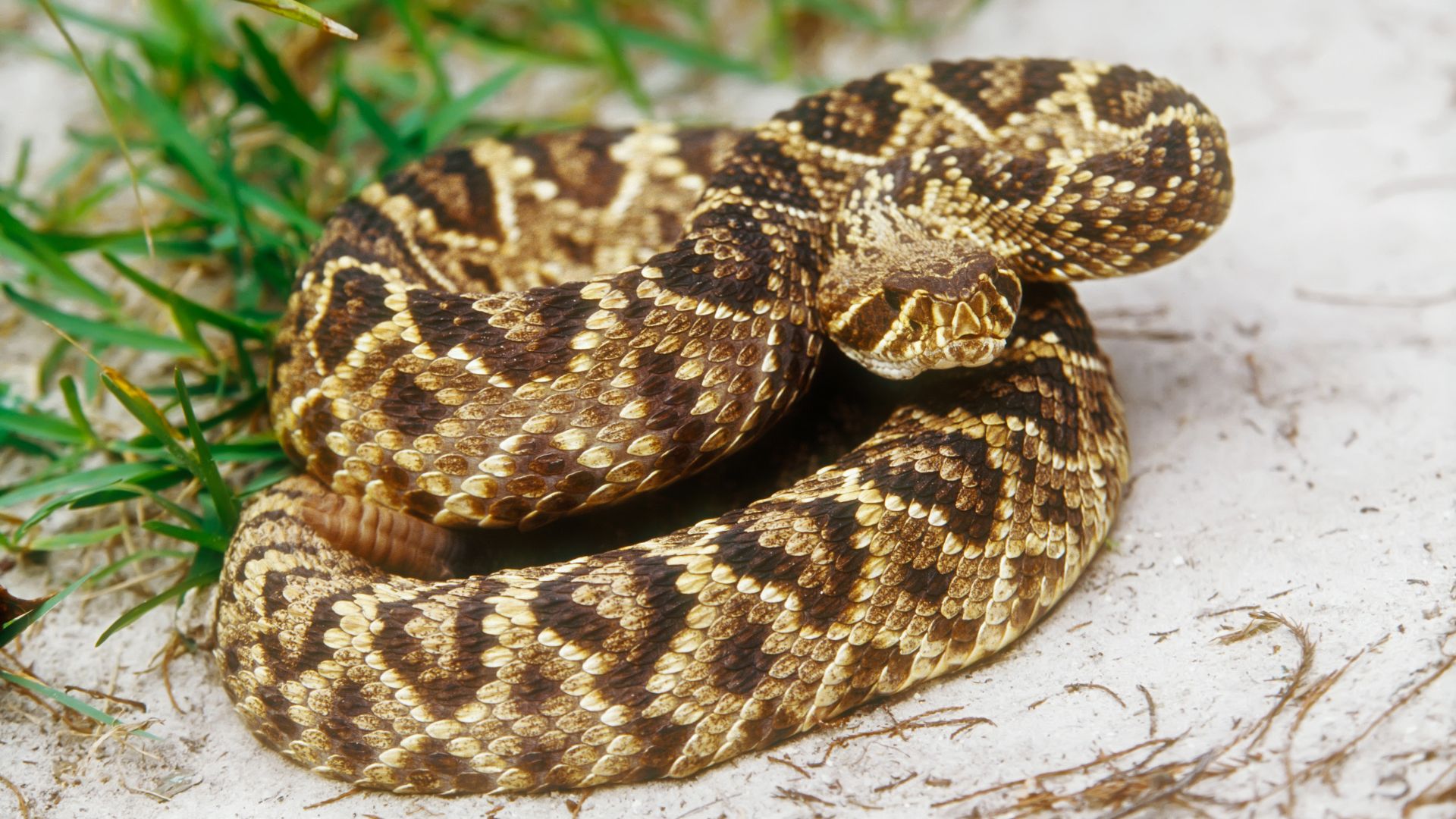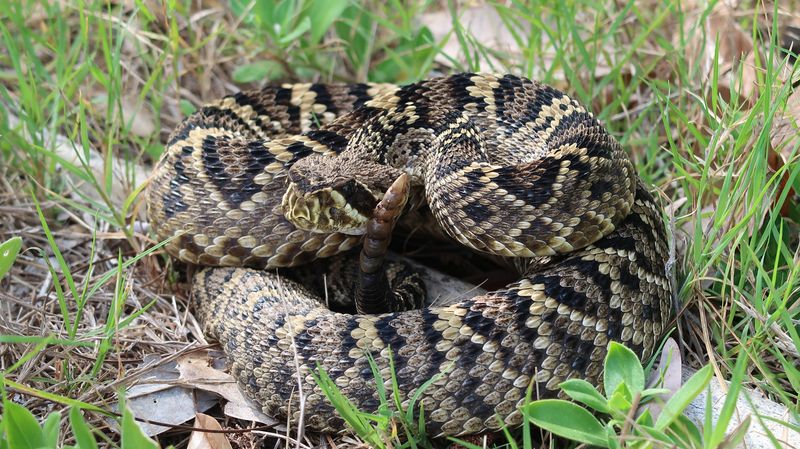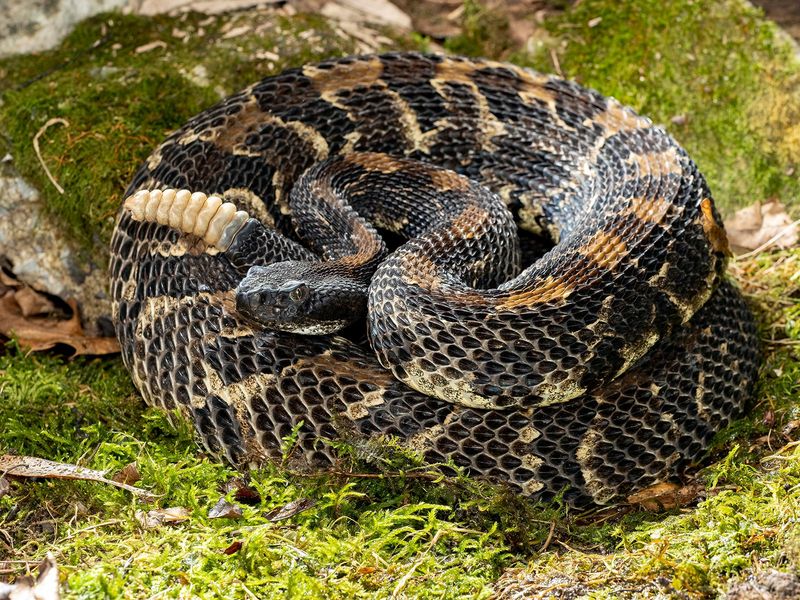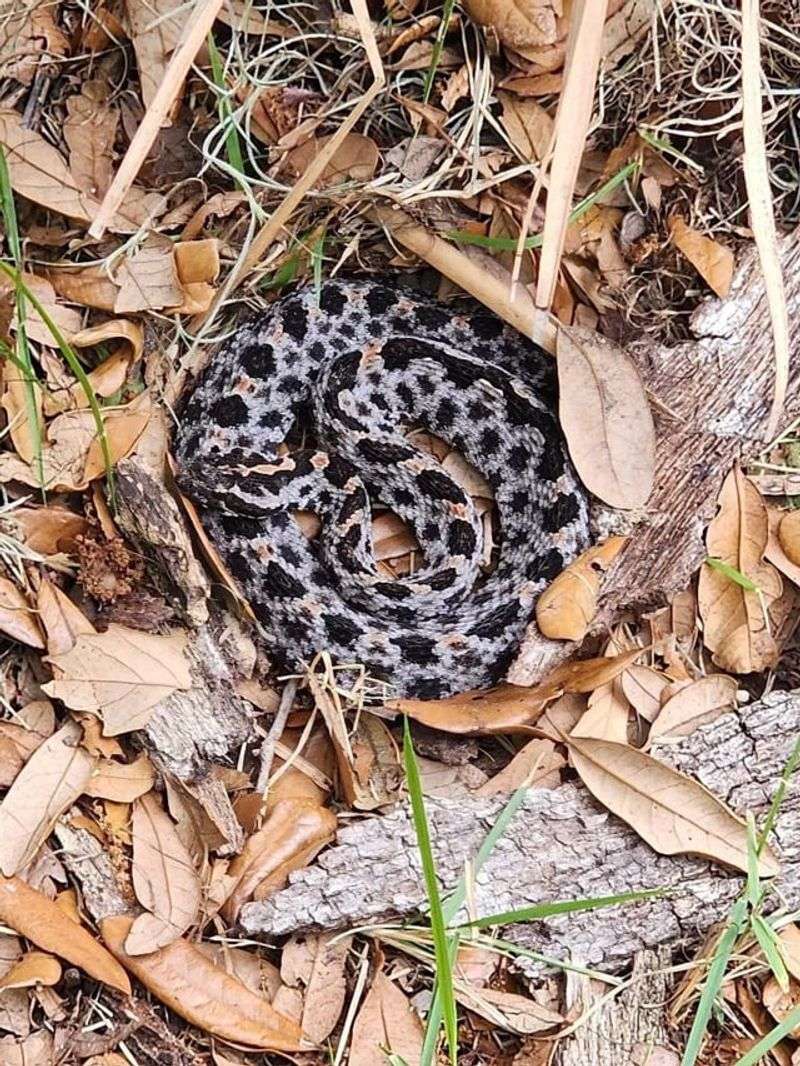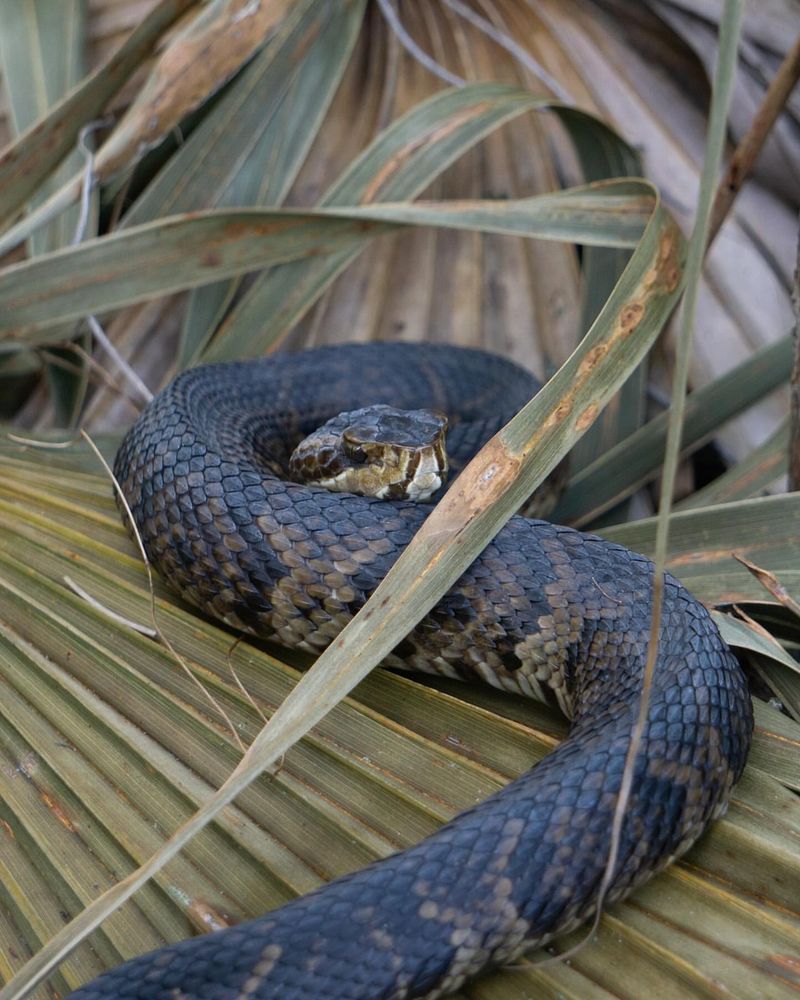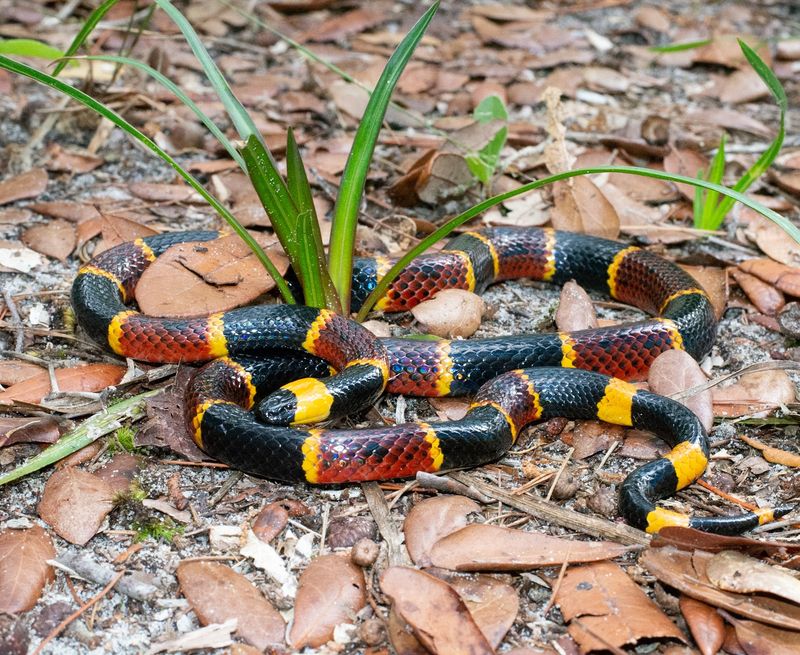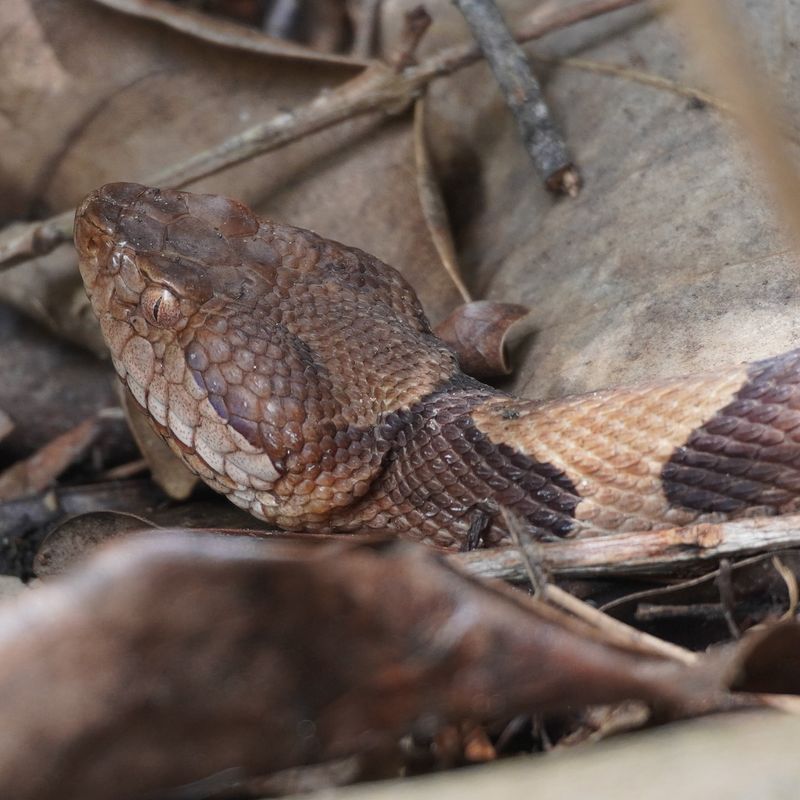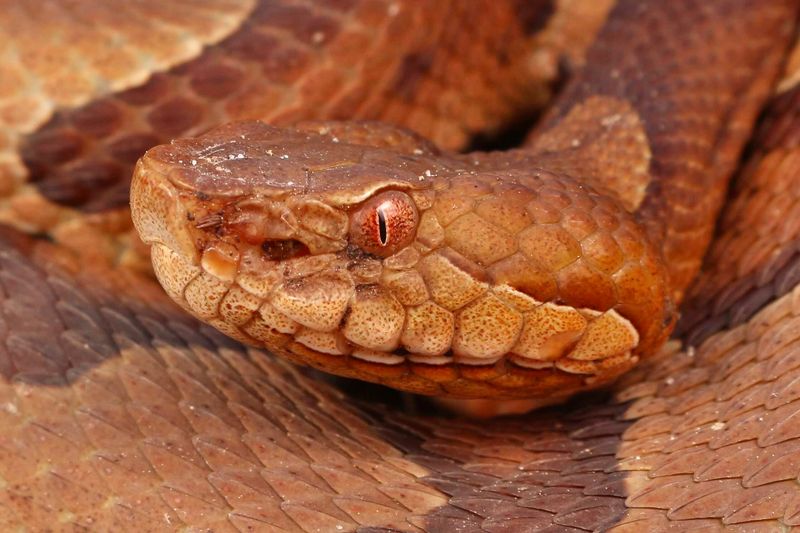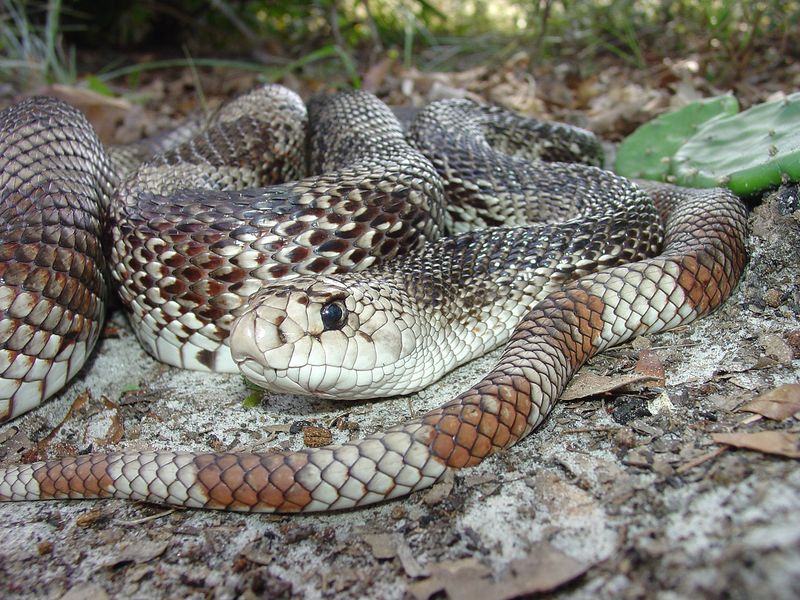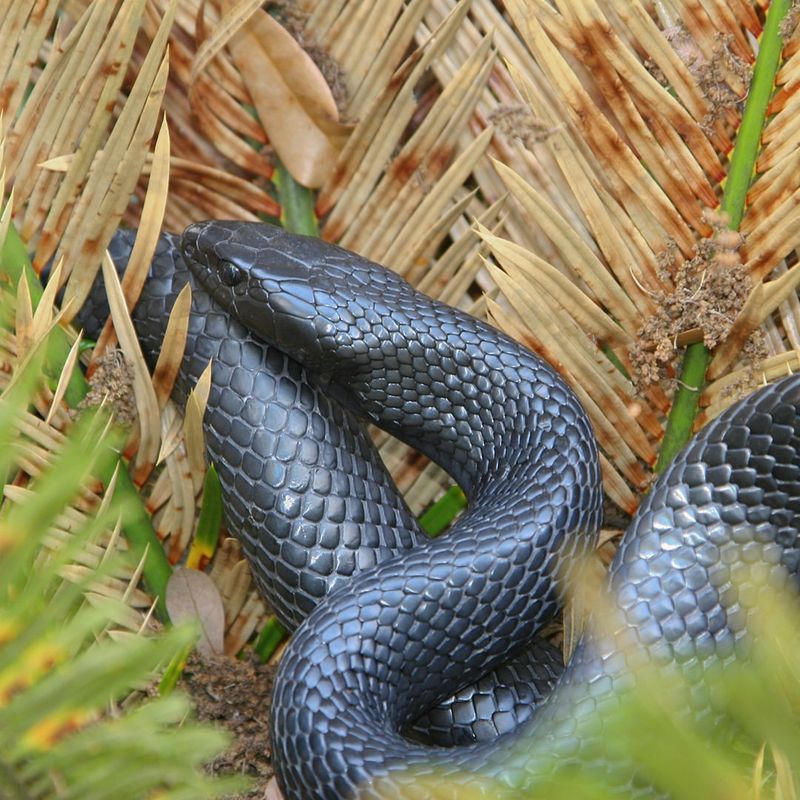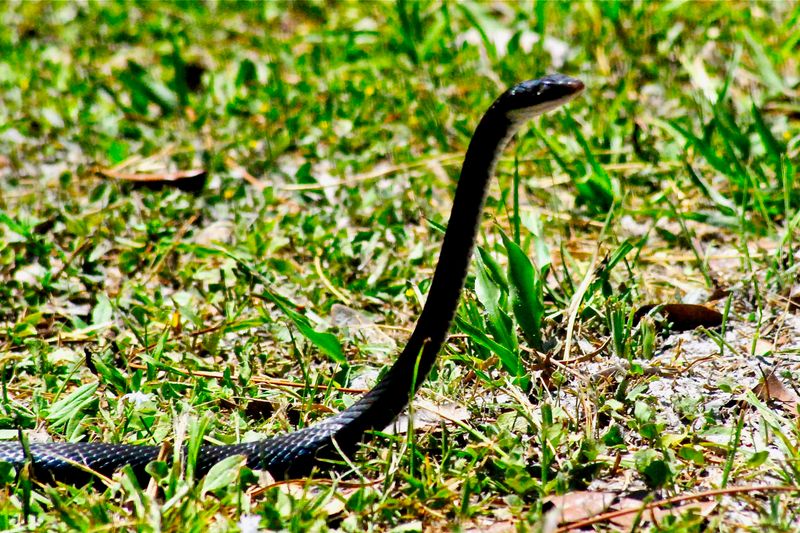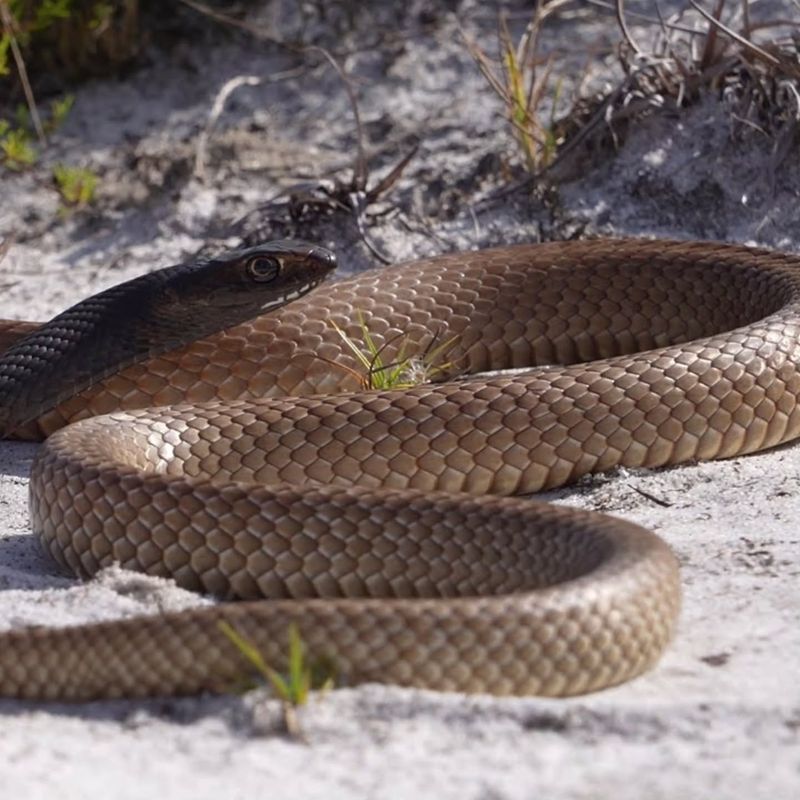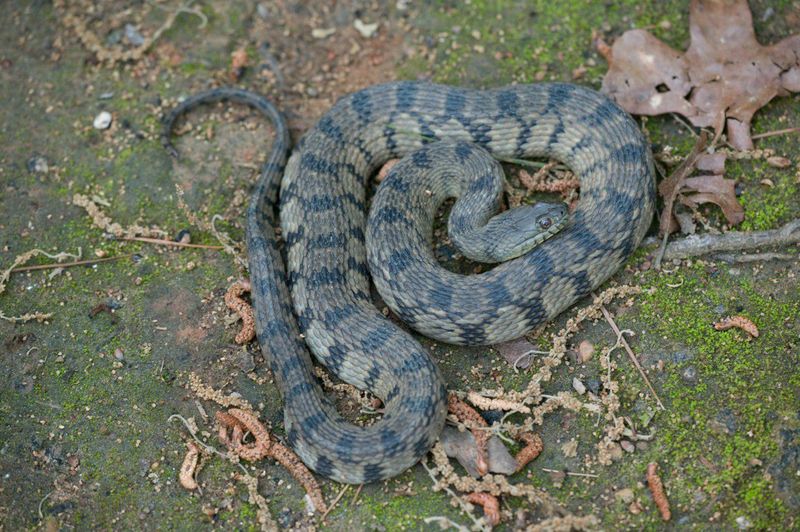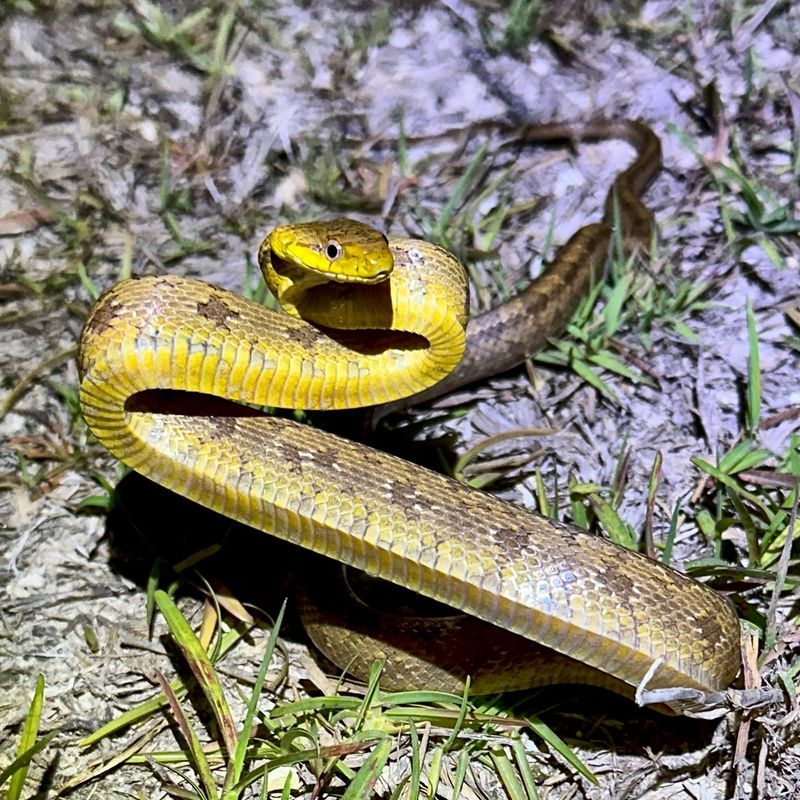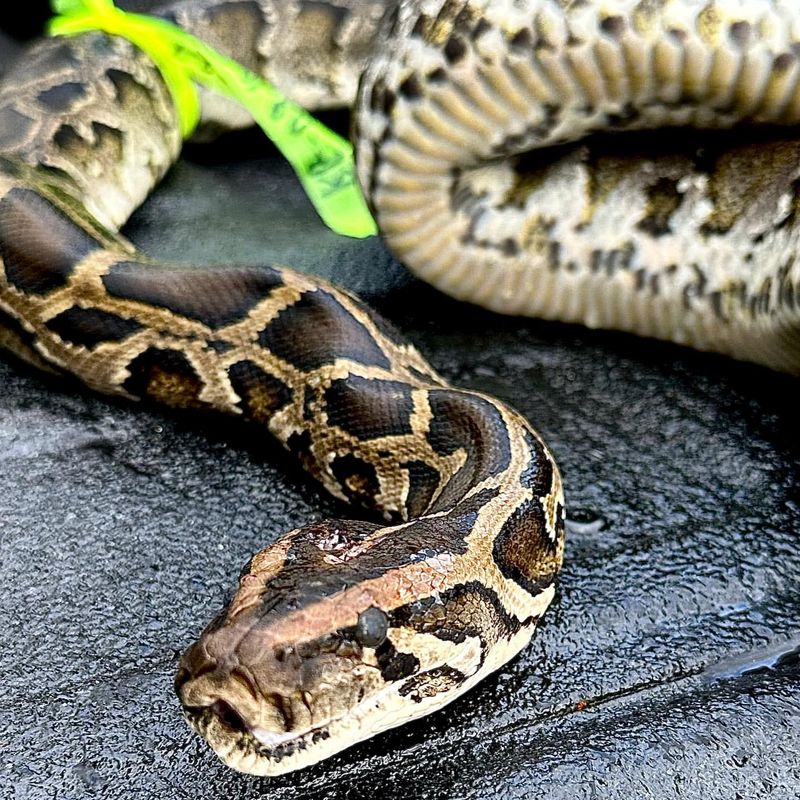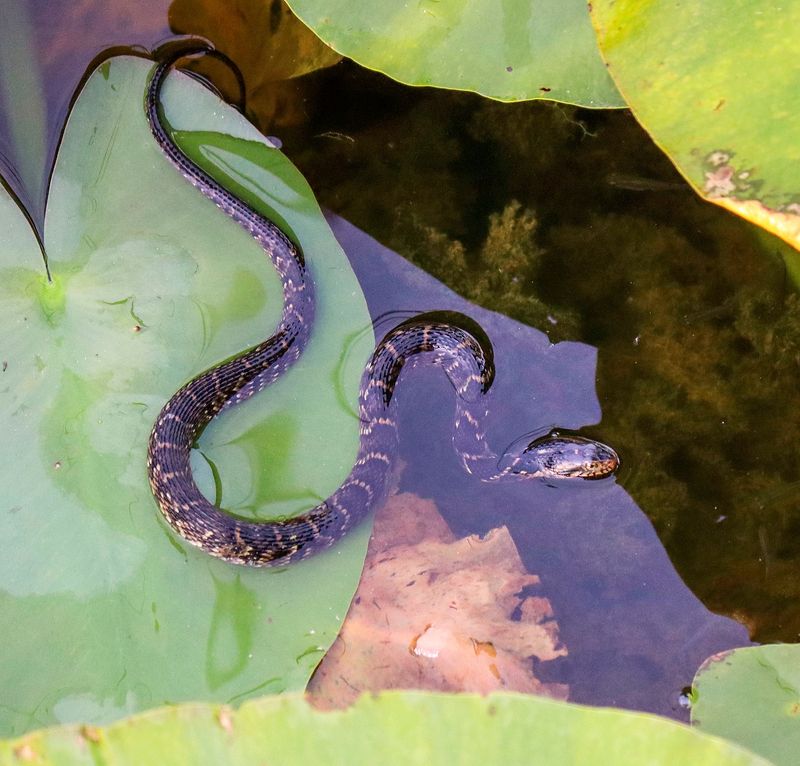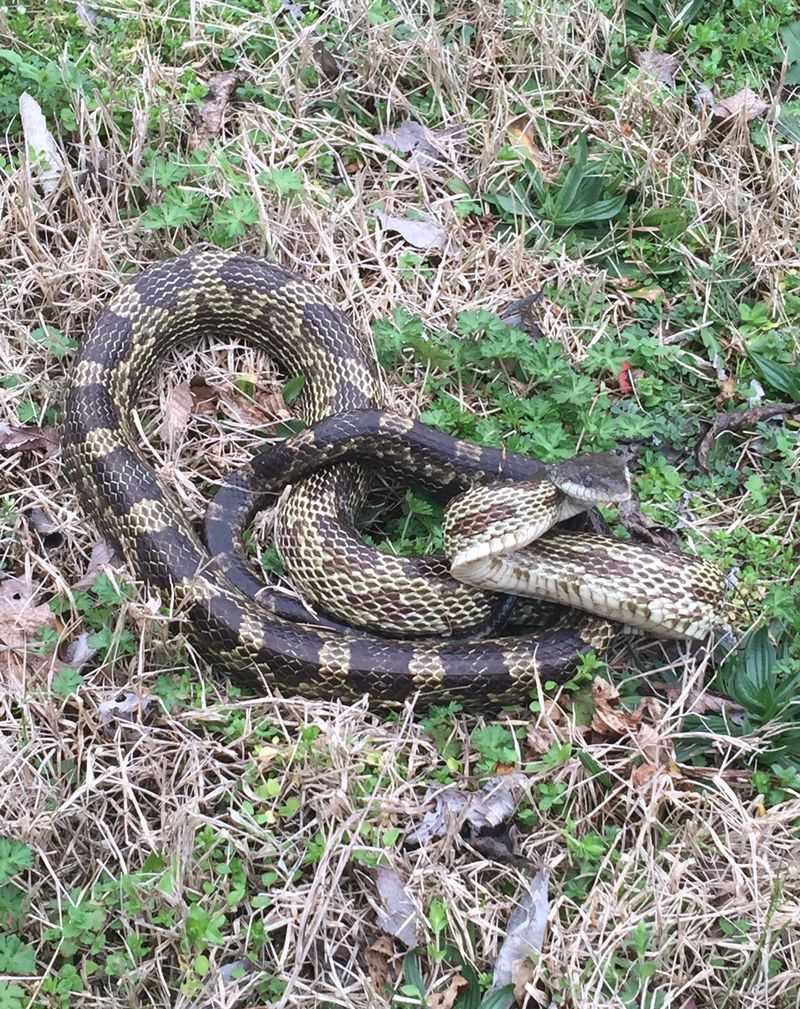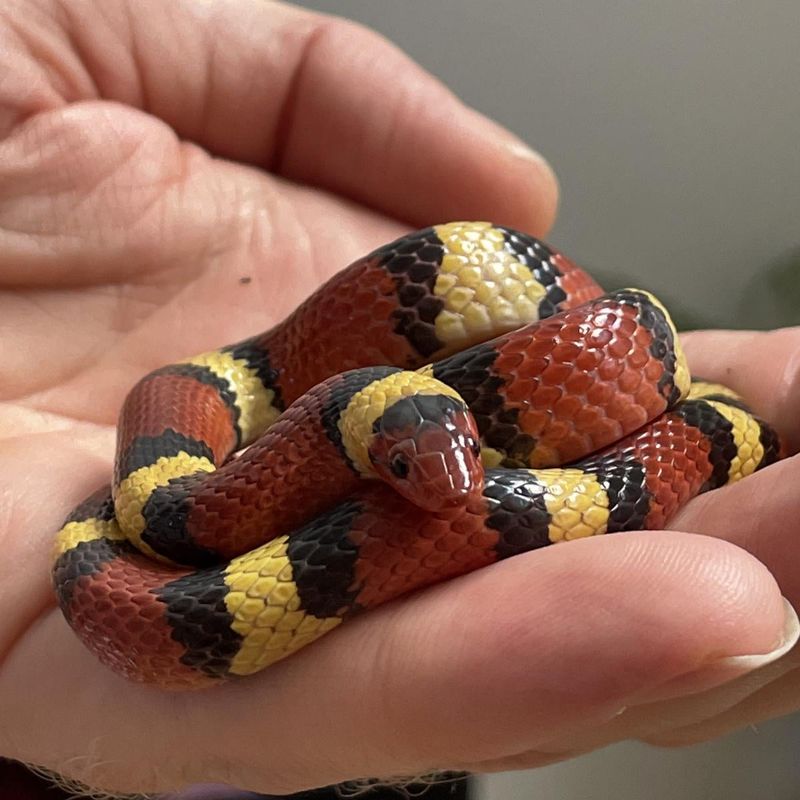Florida’s sunny vibe and wild mix of habitats make it a haven for snakes—most of them helpful and harmless. They keep rodent numbers down and mostly mind their own business, but a few species pack a punch you’ll want to avoid.
Venomous types like the eastern diamondback rattlesnake, coral snake, cottonmouth, and copperhead can pose real threats to pets and people. They often blend into their surroundings, so knowing what they look like and where they hide is key.
Awareness goes a long way—keep yards tidy, avoid tall grass, and never reach into brush or woodpiles without checking first. By staying informed, you can enjoy Florida’s outdoors while keeping your peace of mind (and limbs) intact.
1. Eastern Diamondback Rattlesnake
The largest venomous snake in North America can deliver enough venom to kill several adults with a single bite. These heavyweight snakes often reach 5-6 feet long and prefer palmetto flatwoods and sandy areas. I once spotted one coiled under my garden shed and immediately called a professional removal service. Their distinctive diamond pattern and infamous rattle serve as nature’s warning system. They’re most active during warmer months and are responsible for more snakebite fatalities in Florida than any other species.
2. Timber Rattlesnake
Not as common in residential areas as some other snakes, timber rattlers still make occasional appearances in North Florida yards, especially those bordering woodlands. Their color varies from yellow to black with dark crossbands. My neighbor’s run-in with one while gardening ended with a hospital stay and hefty medical bills. Their venom contains powerful hemotoxins that destroy tissue and prevent blood from clotting. When threatened, they vibrate their rattle vigorously and may strike without much provocation.
3. Pygmy Rattlesnake
Don’t let the name fool you – these small rattlers pack a serious punch. Rarely exceeding 2 feet in length, they’re easily overlooked in leaf litter or garden mulch. Their tiny rattle sounds more like an insect buzzing than the classic rattlesnake warning. Found throughout Florida, these snakes frequently turn up in suburban yards, especially after heavy rains. Honestly, their small size makes them more dangerous as they’re harder to spot before you’re within striking distance – a lesson I learned while weeding my flowerbed last summer.
4. Cottonmouth (Water Moccasin)
Recognizable by their thick bodies and distinctive white mouth-lining displayed when threatened. Though primarily aquatic, cottonmouths frequently venture into yards near water bodies, sometimes wandering surprising distances from water. A fishing trip at my pond turned tense when one swam directly toward my ankles. Unlike many snakes that flee when confronted, cottonmouths often stand their ground, coiling and opening their mouths wide. Their venom causes significant tissue damage and can lead to amputation in severe cases.
5. Eastern Coral Snake
With their vivid red, yellow and black bands, coral snakes are among Florida’s most recognizable venomous species. Remember the rhyme: “Red touch yellow, kill a fellow.” Unlike pit vipers, coral snakes have small fangs and must chew to deliver venom, but what they lack in delivery they make up for in potency. Their neurotoxic venom affects the nervous system and can cause respiratory failure. They’re typically shy and rarely aggressive, but stepping on one barefoot in your garden could spell serious trouble.
6. Copperhead
North Florida residents should watch for these medium-sized pit vipers with distinctive hourglass-shaped crossbands. Copperheads are masters of camouflage, blending perfectly with fallen leaves and forest debris. They’re responsible for more venomous bites than any other species in the United States, though rarely fatal. A friend’s dog needed emergency treatment after a curious sniff in the wrong place. Unlike rattlesnakes, copperheads give no warning before striking, making them particularly dangerous when hidden in yard debris or woodpiles.
7. Southern Copperhead
A close relative of the northern copperhead, these snakes have a more vibrant pattern and prefer the woodland edges common in Florida’s northern counties. Their coppery-brown bodies feature chestnut crossbands that narrow on the sides. Yard work becomes a careful operation when these snakes are around. Their habit of freezing when threatened rather than fleeing makes accidental encounters more likely. While their venom is less potent than some others on this list, a bite requires immediate medical attention and can cause severe pain and tissue damage.
8. Florida Pine Snake
Though non-venomous, these large constrictors can reach 7 feet long and deliver a painful bite when cornered. Their aggressive defensive display includes loud hissing and striking repeatedly, often intimidating enough to be mistaken for venomous species. My first encounter with one sent me running before I realized it was harmless. They’re becoming increasingly rare in Florida due to habitat loss, primarily inhabiting sandy pine forests. Despite their intimidating size and behavior, pine snakes are actually beneficial, controlling rodent populations that might otherwise invade your home.
9. Eastern Indigo Snake
As Florida’s longest native snake, reaching up to 8 feet, the federally protected eastern indigo can cause quite a shock when encountered. Their iridescent black bodies and bluish sheen make them unmistakable. While non-venomous and generally docile, they can deliver a powerful bite if handled. I’ve watched one devour a rattlesnake in my backyard – they’re immune to pit viper venom and often prey on other snakes. Despite their intimidating size, indigos are beneficial and protected by law – removing one without proper permits can result in significant fines.
10. Southern Black Racer
Lightning-fast and common throughout Florida, black racers cause many a heart-stopping moment for gardeners. Their slender black bodies and white chins are often spotted zipping through yards at surprising speeds. Non-venomous but feisty, they’ll stand their ground and may strike repeatedly if cornered. The first time one raced toward me (they were actually fleeing), I nearly jumped out of my skin! They’re excellent climbers and sometimes appear on porches or in shrubs, adding to their startling nature when encountered unexpectedly.
11. Eastern Coachwhip
Looking like a braided leather whip, these impressive non-venomous snakes can exceed 8 feet in length. Their speed is remarkable – they can outpace a human on open ground and are known to chase people who flee from them. The first time I saw one raised up nearly 3 feet off the ground to look around, I was both terrified and fascinated. Though harmless to humans, they’re aggressive when cornered and can inflict painful bites. Florida yards with sandy soils and open areas are prime coachwhip habitat, especially in the peninsula’s central and northern regions.
12. Eastern Diamondback Water Snake
Often mistaken for the venomous cottonmouth, these harmless water snakes cause panic in yards with ponds or near waterways. Their heavy bodies and diamond-patterned backs create unfortunate resemblances to dangerous species. When threatened, they flatten their heads and bodies to appear more intimidating. I’ve watched neighbors needlessly kill these beneficial snakes out of misplaced fear. Though non-venomous, they have an aggressive defense posture and will bite repeatedly if handled, leaving wounds that can become infected if not properly cleaned.
13. Yellow Rat Snake
Growing up to 6 feet long, these yellow or orange constrictors frequently enter Florida homes and outbuildings seeking rodents. Their climbing abilities are remarkable – I once found one on my second-story window ledge! Though completely harmless to humans, their size and habit of vibrating their tails when threatened (mimicking a rattlesnake) can cause quite a scare. They’re particularly common in suburban areas where rodent food sources are plentiful. Despite their intimidating appearance, they’re one of the most beneficial snakes to have around, keeping mouse and rat populations under control.
14. Burmese Python
These massive invasive constrictors have established breeding populations in South Florida. Though rare in typical residential yards, properties bordering natural areas in southern counties may encounter these giants, which can exceed 15 feet. A friend’s small dog disappeared from his Miami-area yard – security camera footage later revealed a python was the culprit. They pose serious threats to pets and wildlife, consuming everything from rabbits to deer and alligators. State law requires reporting sightings to FWC immediately, as they’re a priority invasive species targeted for removal.
15. Banded Water Snake
Commonly misidentified as cottonmouths, these chunky, non-venomous water snakes often venture into yards near lakes, canals, and retention ponds. Their defensive behavior includes flattening their heads to appear triangular – further contributing to confusion with venomous species. After rainstorms, they frequently appear in surprising locations far from water. When my neighbor panicked about a “water moccasin” by her pool, it turned out to be this harmless species. Though non-venomous, they have a painful bite and release a foul-smelling musk when handled.
16. Gray Rat Snake
These large climbing snakes (reaching 6+ feet) frequently appear on porches, in attics, and around bird feeders. Their gray bodies with darker blotches help them blend into tree bark and building exteriors. Coming home to find one draped across my front door was certainly memorable! While non-venomous, they’re persistent home invaders, squeezing through tiny gaps in search of rodents or birds. Florida’s most common large snake, they’re beneficial but startling when encountered unexpectedly – especially when dropping from trees or appearing in garages.
17. Scarlet Kingsnake
Frequently confused with the venomous coral snake, these harmless mimics display similar red, black, and yellow bands. The key difference lies in the band arrangement: “Red touch black, friend of Jack.” Finding one while gardening caused me momentary panic until I remembered the rhyme. Despite their intimidating appearance, they’re completely harmless and actually beneficial, as they eat other snakes, including venomous species. Rarely exceeding 2 feet in length, they’re secretive and typically found under logs, rocks, or in leaf litter throughout Florida.

